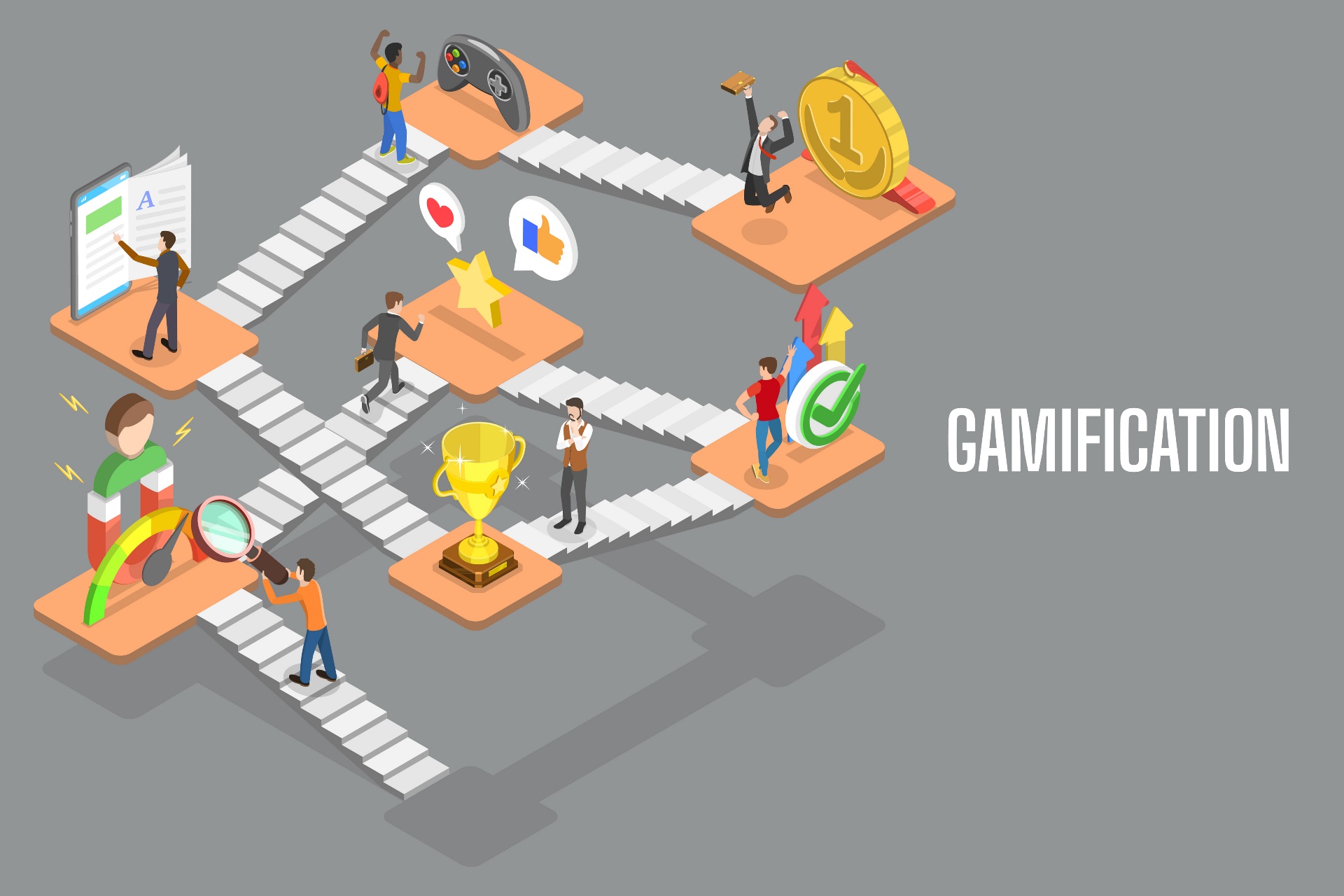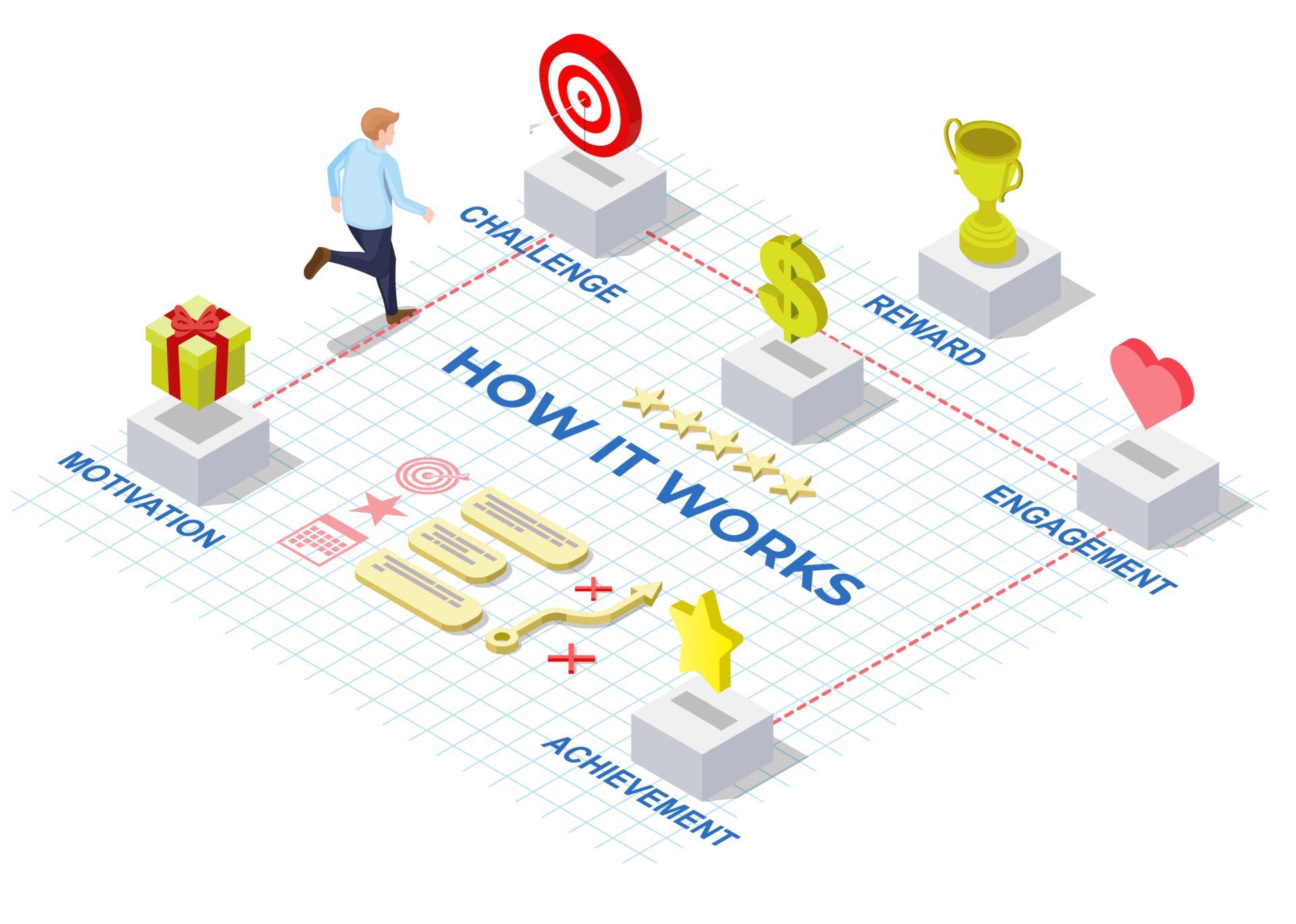Ensuring Engagement through Gamification
Why is engagement so important?
One of the main goals when creating and framing learning content is to keep our learners’ attention. As instructors we’re always looking for ways to make content engaging as well as educational. What makes engagement so important? We know that when we’re interested in something, our brain doesn’t have to work as hard to absorb and retain it. We reduce cognitive load and increase retention – two wins! Engagement on an emotional level is another element – if we are invested in our learning community, or in the topic content because we like it or believe in it, we are more likely to learn successfully.
Keep in mind that boredom has been identified as one of the biggest obstacles to successful learning in the international school system, and it’s also a huge factor in adult learning. A bored learner is going to need extra motivation to stay focused and it’s up to the content creator to try and provide it.
Gamification to the rescue!

So what do you do if the information you have to convey just isn’t engaging? For example, it may be essential that a medical student knows all the various drugs and their interactions for a certain condition, but at a certain point it becomes rote learning and memorisation. The content itself is not engaging. How do you make it engaging? How do you ensure that the investment in training pays off?
Happily, there is a solution to this dilemma! The concept has been around for quite some time and has been shown to be particularly effective in getting learners to engage and stay motivated even in the face of extremely dull content. This is gamification.
It’s important to make a clear distinction here about what gamification actually is. A fundamental misunderstanding of the idea is that it means taking content and making it into a game like Monopoly or Candy Crush. In actual fact, gamification entails taking the principles that make games engaging and applying them to learning. This is not to say that you can’t adapt your content to become more game-like, but rather that you don’t have to create a new version of Minecraft or Super Mario for your training to succeed.
What is Gamification?

Basic Gamification Principles
What are the basic principles behind gamification? The leaders in gamification development looked at what people like about games and realised there were some core motivations that kept people engaged and playing. These included reward, competition, autonomy, accomplishment and positive reinforcement.
Yu-kai Chang codified these core drives in his book Actionable Gamification, 2015. In it he describes eight core drives that motivate human behaviour. He called this the Octalysis Framework. These eight drives include motivations such as a belief that you are part of something that is greater than yourself – ‘Only you can save mankind. Another is a sense of accomplishment – you work towards a goal, overcome a challenge, achieve a certain score. Social relationships and influences are great motivators – seeing what someone in a peer group has achieved or is experiencing moves us to want the same thing or even to compete for a similar reward.
When we take these motivations and use them as a scaffold in our instructional scenarios, we create opportunities for learners to participate in actions that they will want to repeat. They will be encouraged to keep learning.
How does Gamification work?

Depending on your approach, you can apply gamification either to the content itself or as a framing structure around the learning experience.
Content gamification takes the course information and uses storylines, challenges and problem-solving activities and scenarios to draw the learner into role-playing much like many of the popular role-playing games.
The structural approach is an excellent solution for situations where training courses are already created and in use. The content stays the same while the gamification scaffold encourages the learner to move through the course. Gamification tools that track and score a learner’s progress are increasingly available and can be applied retroactively. This may seem superficial, but we have first-hand experience of the impact deploying a tool like Level-Up can have on motivating a learner to engage more often and make progress. We have a number of clients with on-line solutions for primary school and high school, who are using gamification in this way. In one instance, a teacher awarded a previously less engaged learner points for completing an activity and was thrilled to see the learner’s engagement immediately increase substantially. The child not only increased interaction, but maintained it over an extended period. Grades and achievements improved simultaneously.
Conclusion
There is no question that gamification can be of great benefit in increasing and maintaining training engagement. We have certainly seen its advantages for maximising successful learning, both when applied to content creation and when using the structural options. Why not talk to us about optimising your learning solutions?

Kerushan Naidoo
Head of Moodle Development
Kerushan has a decade of experience working wonders with Moodle. That’s why we rely on this man for the winning plan. He is an active Moodle community member and, either knows of the perfect plugin for your needs, or will customise and develop a plugin to meet your unique requirements.
